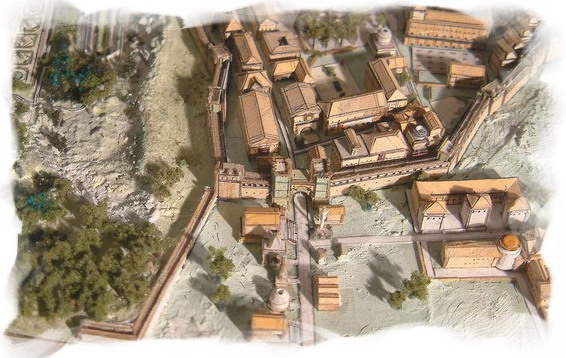The Porta Prænestina
, today Porta Maggiore (Main Gate) was a double arch gate which carried the aqua Claudia - Anio novus,
aqueducts, the Aqua Claudia was at the bottom of the attic, the Anio Novus on the top of the attic.
Built in 52 by the emperor Claudius, this gate became integrated into the Aurelian Wall in 252.
This gate still exists today, and you can see on the outer side the republican tomb (30 BC) of
the baker Eurysaces and his wife Atinia, which appeared in 1838 during the restauration of the Porta Maggiore.

The
Porta Latina.
the gate owns its name to the
Via Latina,
the road that led towards south. It consisted in a single arch flanked by two cylindrical towers. As soon as we pass the Aurelian Wall,
the Via Latina is strewn with mausoleums and tombs.
The
porta Flaminia (
Porta Flaminia )
(today’s porta del Popolo) was the main north access gate to Rome.
The
Porta Nomentana (
Porta Nomentana )
The gate, built between 270 and 273 by order of emperor Aurelian,
presented at that time one single arch flanked by two half cylindrical towers,
of which only one is still standing
today.
The
Porta Salaria (
Porta Salaria ).
Created to make an easy access to the Via Salaria Nova when coming from the Porta Collina
in the Servian wall, through the Via Salaria Vetus. It got reinforced under emperor Flavius
Honorius’ reign during the Vth century, but did not stop the invasion of Goth king
Alaricus Ith who ransacked Rome on 24th december 410. It was finally destroyed in 1921. Here is this gate according to a
drawing of 1750.











